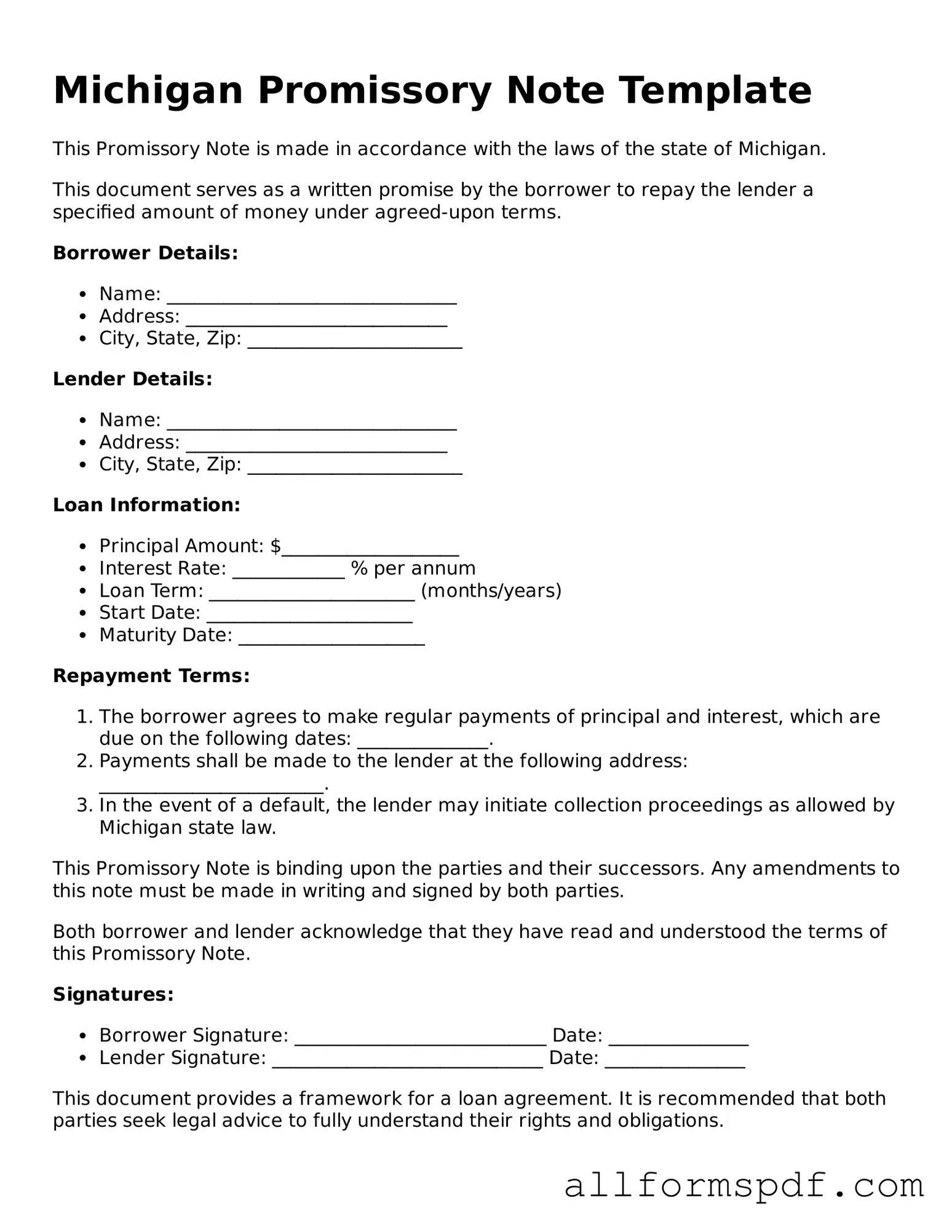Fillable Promissory Note Form for Michigan
A Michigan Promissory Note is a legal document that outlines a borrower's promise to repay a specified amount of money to a lender under agreed-upon terms. This form serves as a written record of the transaction, detailing the loan amount, interest rate, repayment schedule, and any other conditions. Understanding this document is essential for both borrowers and lenders to ensure clarity and protect their financial interests.
Create My Promissory Note Now
